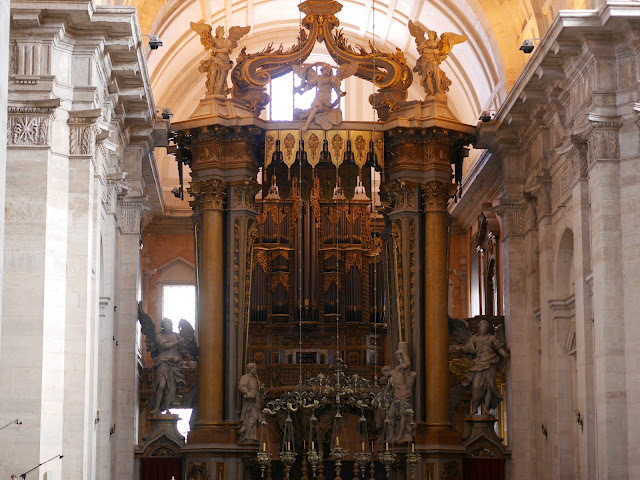The white limestone of Igreja de Sao Vicente de Fora stands out against Lisbon's red rooftops and can be seen from all over the city. Once the Moors were defeated, it was built on the site where Flemish and German crusaders had pitched their camp. "Fora" means "outside," meaning it bravely stood outside the city walls after the reconquest.
Like just about every structure in Lisbon, it has been pulled down and rebuilt. Its Late Renaissance facade is imposing but harmonious ― identical twin bell towers, three arched entryways topped by niches holding Saints Sebastian, Augustus and Vincent (who's doing a crazy dance here).
An impressive Baroque canopy floats above the altar.
The Thieves' Market, or Feira da Ladra, is out back. It has been held every Tuesday and Saturday for the last 140 years, but its origins go back to the 14th century. In the 1755 earthquake, more than 400 people were buried under a Franciscan monastery on this spot.
I didn't see a lot of fixed prices. If you're patient and willing to walk away, you can probably get some good deals.
Haggling isn't really my thing, so I spent 5 euros on a three-pack of socks. One cannot have enough. A guy was willing to sell a vinyl copy of the Beatles "Let It Be" for 5 euros(!) and some full-size Herge "Tintin" books were on offer for 3.
Just up the street is a Middle Eastern fusion place called Damas (Rua da Voz do Operario 60), and their chef is on fire. Below is a fish soup with coriander and a tomato salad with zaatar (a wild Syrian thyme/oregano that I have written about in Beirut and which I've had success growing ... and killing.)








Comments
Post a Comment